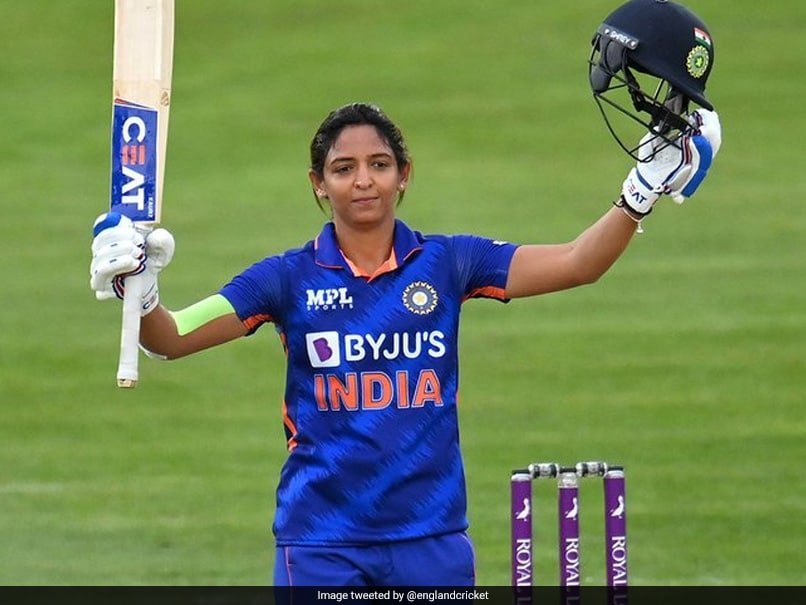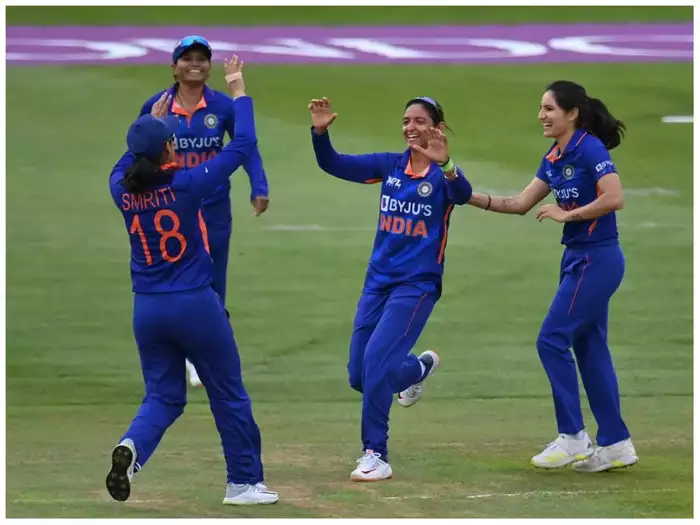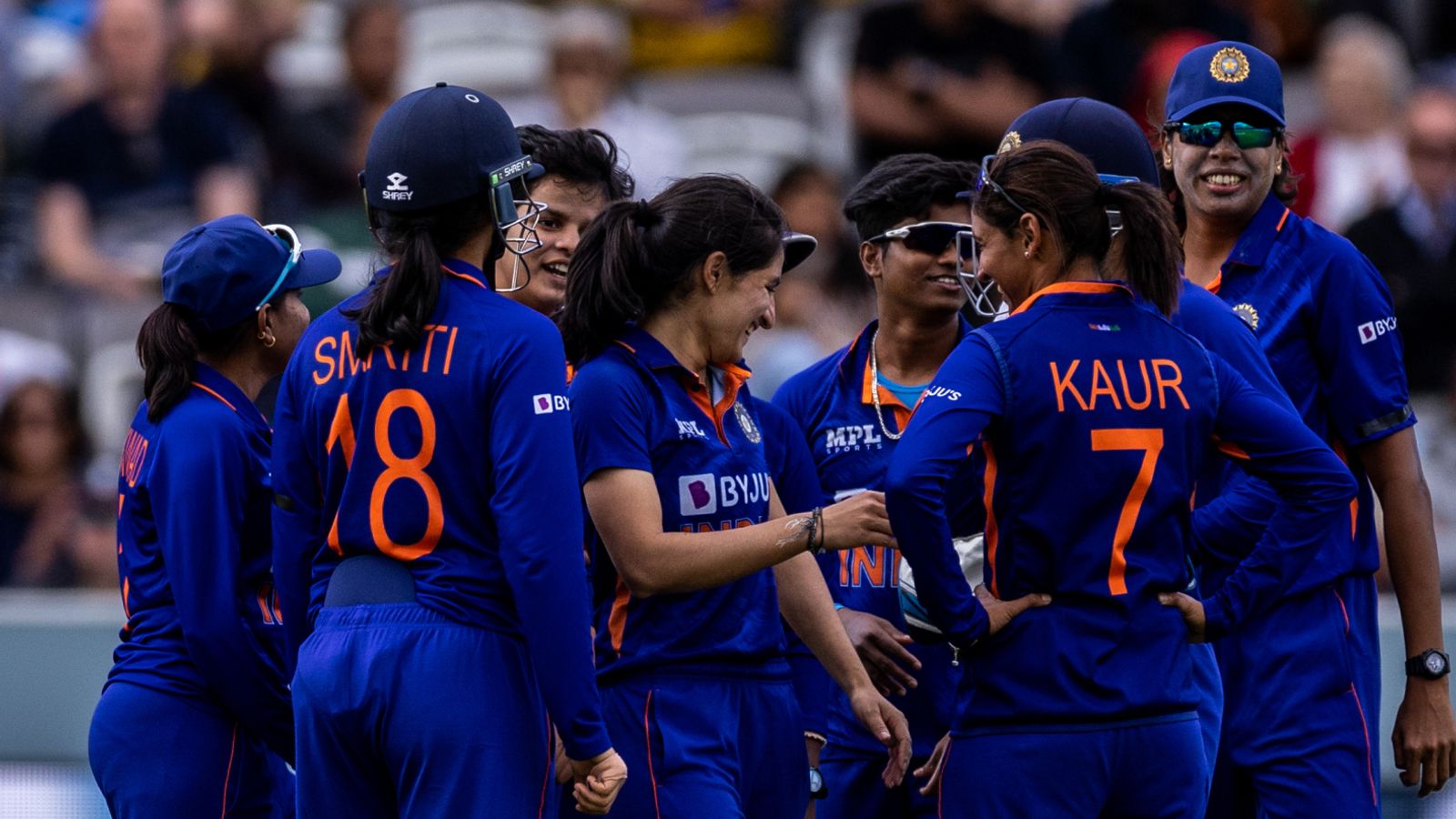Thursday, October 27th was a historic day for Indian cricket. The BCCI made a landmark announcement, implementing a new pay equity policy for its women cricketers. The new pay policy means that BCCI will now pay men and women cricketers the same match fees, for all international games that they play. The Indian women cricketers will now be paid Rs. 15 Lakh for Tests, Rs 6 lakhs for One Day Internationals, and Rs 3 lakhs for T20 Internationals, same as the men’s team. This indeed is a welcome change as opposed to the earlier match fee slab of Rs 4 lakhs for test matches, and Rs 1 lakh for T20s and ODIs, for the women.
“As far as equal pay is concerned, New Zealand showed the way earlier this year. In New Zealand, women have contracts in domestic cricket too which is the same as the men. It’s going to take a while but it is the investment at the domestic level that will really make the difference. Just recently, the ECB (England and Wales Cricket Board) announced a 3.5 million pound budget hike for their regional women’s cricket till 2024. That’s vision, and that’s intent. It helps in building a system, and nurturing talent, ensuring girls don’t leave the game midway.”
Suprita Das
The decision was welcomed by many former and current men and women cricketers, administrators, and fans alike and is definitely a step forward towards a more gender-equal playing field for cricket in India. The announcement also comes at the heels of the women’s cricket team winning the Asia Cup 2022 and a historic series win in England.
Former sports journalist, author of ‘Free Hit: The Story of Women’s Cricket in India‘ and the current media manager of IPL team Delhi Capitals, Suprita Das in a conversation with Feminism in India says that the Indian team’s performance has played a massive role in this decision. “We all speak about how the team’s runners-up finish in the 2017 World Cup was a watershed moment for the women’s game in India. In the previous edition of the World Cup, in 2013 – India had failed to make it to the knockouts, and it was a World Cup held in India. It was like a massive body blow and ended up in lesser interest and therefore lesser support from the board. Cut to 2017, and the graph has only and only moved up. While a major trophy/medal still eludes us, I do believe that the team’s impressive showing in the Commonwealth Games where they won silver, and then the historic series win in England after 2 decades, did play a major role in this decision being taken,” Suprita adds.
Socio-economic divide within the Indian society further puts added pressure on women who want to play the game. Pay parity in the domestic circuit will go a long way in ensuring parity when it comes to young women picking up the bat and ball.
Author, statistician, cricket analyst, and Head of Content at Wisden India Abhishek Mukherjee however believes that the performances should ideally result in rewards or bonuses. “These should be a separate concept from match fees. Equal match fee for women is a right, and should happen irrespective of performance,” adds Abhishek, in a conversation with Feminism in India.

While it is a huge decision and like the announcement read “first step towards tackling discrimination”, there are but several layers that one must talk about to understand whether it remains a tokenistic gesture or evolves into a transformational one. The pay parity was long overdue and what one could say is the bare minimum that was warranted, given the day and age that we are at where addressing the gender pay gap is of utmost importance.
Also read: Smriti Mandhana: An Inimitable Presence In The Indian Women’s Cricket Team
Women’s domestic cricket still lags behind
Firstly, BCCI is also not the first cricket board to be implementing such changes. BCCI being one of the richest sports bodies in the world, followed the steps of New Zealand, to announce a pay equity deal between their men and women cricketers in 2021. This was not just limited to international players but also those playing at the domestic level. It warrants to be noted that the New Zealand cricket body had to cut jobs during lockdown due to a cash crunch.
“Things have improved over the past few years, but there is still a long way to go. Having said that, whatever recent positive change we have seen could have happened long ago had there been better representations at every level.”
Abhishek Mukherjee
Domestic cricket is one of the first few spots, where the BCCI’s announcement falls short. While an equal match fee for international players is a welcome step, it does not change anything for those at the grassroots level. The pay parity does not percolate to domestic women players, which is something extremely crucial to encourage greater participation and investment in women’s cricket. The Domestic playing circuit remains a space where young talent is spotted, and while women in sports have made considerable impact and progress over the last decades, the bias still exists at the grassroots level. Further, socio-economic divide within the Indian society further puts added pressure on women who want to play the game. Pay parity in the domestic circuit will go a long way in ensuring parity when it comes to young women picking up the bat and ball.
The Indian men and women cricketers who are on contract get money from the BCCI in three separate parts- their match fee, their central contracts, and a portion of BCCI’s annual revenue share. Out of this only one component, that of the match fee has been equalised.
Same match fee but much lesser matches for women
This brings us to the second point, on the number of international matches played by both the men and women’s cricket team. The number of matches that the Indian women’s cricket team has played in the past year is glaringly low as compared to the men’s team, who have been on one tour after another. What’s worth noting is that the Indian women’s cricket team has played just two Tests in the last eight years. The men on the other hand have played 10 times the number of games. If the number of games played by the women’s team does not increase, there would be no way for them to earn the “equal fee” that is now being guaranteed to them.

Since October 1, 2021, the Indian men’s team has played 8 Test matches, 18 ODIs, and 40 T20Is while the women’s team has played no Tests, 18 ODIs, and 23 T20Is, including matches from the ODI World Cup and the Commonwealth Games this summer
“The volume of cricket the women play is nothing compared to the men. So, to put it quite simply – how much is the match fee parity going to count for, if the number of matches doesn’t go up? I think all stakeholders of the game now do realise that the appetite for the women’s game is a healthy one. So, it’s important that they have a roadmap now. Equal match fees will count for little if the opportunities to play aren’t equal as well,” says Suprita.
Also read: Unequal Pay: Wage Inequality And Gender Sensitive Policy Framework
Abhishek adds that there is a huge possibility for the number of matches played by the women’s team to increase, especially with a women’s IPL around the corner in 2023. “Only one international team has toured India in the last three years. It is time. We have seen reasonable crowds and excellent following on television/streaming as well as social media, despite there being little to no promotion. If promoted efficiently, the viewership is bound to increase,” he says.
Disparity in annual contracts of players
Another very important financial aspect that also needs to be talked about is BCCI’s central contract for Indian cricketers. The biggest source of income for both men and women cricketers from the BCCI is their central contracts with the board. Players are contracted with the board on a per-year basis for which the board puts them on a retainership fee. That is if a player is injured, or for some reason cannot avail match fee, the central contract allows them to draw a salary. The disparity in pay for men and women cricketers becomes very evidently visible here. That is because according to the contract division women cricketers in the highest pay grade earn lesser than their male counterparts in the lowest pay bracket. To make it clearer, Harmanpreet Kaur, the captain of the Indian women’s cricket team contracts Rs 50 lakh a season, while Indian men’s captain Rohit Sharma takes home Rs 7 crore.
“As far as equal pay is concerned, New Zealand showed the way earlier this year. In New Zealand, women have contracts in domestic cricket too which is the same as the men. It’s going to take a while but it is the investment at the domestic level that will really make the difference. Just recently, the ECB (England and Wales Cricket Board) announced a 3.5 million pound budget hike for their regional women’s cricket till 2024. That’s vision, and that’s intent. It helps in building a system, and nurturing talent, ensuring girls don’t leave the game midway,” Suprita says.

Abhishek notes that the women cricketers got a hike in 2021, and now receive Rs 20,000 per day. Whereas the male Under-23 cricketers get Rs 25,000, and the Under-19s get Rs 20,000. While International match fees are significant, it applies only to a select few who get to be part of the game. “If equal match fee is the goal, it should be applicable to everyone, even the ones who do not get an India cap or just play a couple of international matches. Once that happens, women will be encouraged more than ever to take up cricket as a profession even if they are not good enough to play beyond domestic cricket. It is extremely important for every domestic cricketer to become financially independent. Just like international cricket, equal pay is a right, not a privilege, in domestic cricket,” says Abhishek.
Yet another very important data that must be highlighted is the BCCI’s annual revenue share. A share of what the BCCI earns each year is divided amongst the players. According to BCCI’s treasurer Arun Dhumal, the total revenue as of 2022 stands at Rs 9,629 crores. 26% of this amount is divided amongst the cricketers. Out of which, 13% is given to the men’s team players, 10.3% to domestic cricketers (men), and 2.7% is divided between women cricketers and junior cricketers. This stat just further pinpoints the existing pay disparity between men and women cricketers in India.
Investment and sponsorship in women’s cricket
While men’s cricket and the IPL remain a huge treasure trove for investors and sponsors, the story is not quite the same when it comes to women’s cricket. While the women’s team has had consistent steady performances, and a women’s IPL intended for a 2023 start, there still exists a gaping hole when it comes to investing in the women’s game. Furthermore, lack of promotion, broadcasting, and marketing also works adversely for the women players.
“Numbers are important to make a deeper impact and a real difference. Women need to be seen in these spaces and they need to be heard.”
Suprita Das
Suprita notes that the cricket space is extremely busy and buzzing one at the moment, with the game being played in so many formats and so many places across the world. “Women’s cricket is the way to make the sport grow, and in some sense, this is a test for brands as to how far they really want to go, but most importantly about their intent and willingness to invest,” she adds.
Also read: Harmanpreet Kaur: The Inspiring Journey Of The Indian Women’s Cricket T20 Captain
Data points out that there is a major lack of promotion when it comes to women’s events. If you scroll through an average channel list, the media coverage for men’s sports is around 90-95% of what is on at any given time. But the Indian women’s cricket space is rapidly changing. “I find it difficult to believe that the sponsors are letting an obvious opportunity go. There are so many superstars and so many more in the making. There is so much potential. However, with a women’s IPL around the corner, there will be more sponsors and investors in women’s cricket,” says Abhishek.

The announcement made by BCCI specifically said that Indian cricket is moving towards a new era of “gender equality“. But this equal representation has to reflect not just on the field but off it as well. Lack of female representation within the BCCI, in its administrative posts, and selection committees, stands at odds with its aims to create a more gender-equitable cricketing ecosystem in the country. “Numbers are important to make a deeper impact and a real difference. Women need to be seen in these spaces and they need to be heard,” says Suprita.
Abhishek also adds that for years, their pay structure, playing opportunities, coaching facilities, marketing, and coverage, for women’s cricket and women’s sports, in general, have been neglected. “Things have improved over the past few years, but there is still a long way to go. Having said that, whatever recent positive change we have seen could have happened long ago had there been better representations at every level,” he adds.
The Cricket ecosystem for far too long has been run by men and for men, which has led to women in the system being at a disadvantage. While an equal match fee is most definitely a welcome start, there is however a long road ahead to achieve gender justice, gender equality, and gender equity in its truest sense.
About the author(s)
Shriya is a former student of literature and a multimedia journalist with an interest in sports and human rights. She can be found watching Shah Rukh Khan movies or listening to Ali Sethi and 90s Bollywood songs. She enjoys a good cup of black coffee multiple times a day and is often compared to 'Casper, the friendly ghost'.




